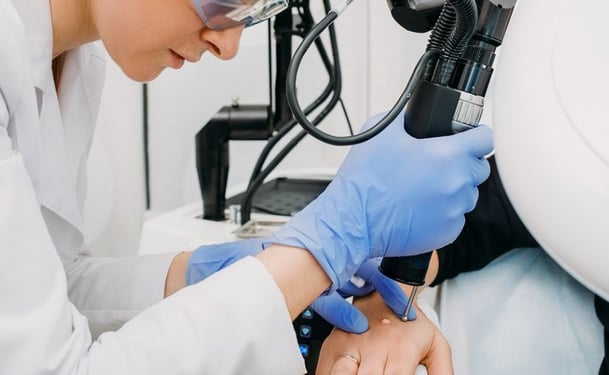The many forms of wart treatment include topical remedies that can be applied at home or by your doctor, as well as surgical procedures that must be done by your doctor in a clinic. Despite the wide range of choices available, none of the available treatments for wart removal is invariably effective. Therefore, it is advisable to start with the least painful, invasive, expensive and time-consuming method before trying out more extreme wart removal procedures. Nevertheless, it is certainly a safe and cost-effective option to not treat warts at all, because majority are asymptomatic and spontaneous regression is expected in up to 65 percent of cases. However, treatment is recommended for extensive and persistent warts, warts that are cosmetically unpleasing and symptomatic warts.
About Infrared Coagulator
Surgical and invasive methods of wart removal are not recommended as first-line treatments, because, unlike the use of medications and topical agents, they are expensive and potentially scarring. Oftentimes, these procedures are reserved for extensive and resistant warts. The more commonly employed surgical methods for wart removal are surgical curettage, electrocurettage and laser therapy.
Another surgical method of wart removal is called infrared coagulation, or the use of an infrared coagulator. Infrared radiation is a part of the electromagnetic spectrum with a slightly greater wavelength than red light (hence the term infrared). Infrared is not visible to the naked eye, but is responsible for heat energy. In an infrared coagulator, a noncoherent, multispectral light infrared source delivers infrared radiation to an affected area, which causes the temperature of tissues to rise about 100 degrees C. Intracellular fluids literally boil and proteins are destroyed, ultimately burning off the wart tissue.
The US Food and Drug Administration (FDA) has already approved the use of infrared coagulation in the treatment of nongenital warts, as well as hemorrhoids. Studies have shown infrared coagulation to be as effective as electric curettage and may even be safer, with lower risks for bacterial infections after the procedure. In addition, infrared coagulation is a very versatile method of wart removal because the depth of tissue destruction can be tightly controlled by simply adjusting the length of time a tissue is exposed to infrared.
What to Expect
- Pain – Infrared coagulation causes less pain than other methods of wart removal. A sharp, stinging sensation may be felt on the affected area as the infrared hits the skin.
- Scarring – With infrared coagulation, only the areas exposed to the finely focused beam of infrared are coagulated. Sparing of surrounding tissues means that there is very little risk for scarring.
- Cost – Coagulation therapy is considerably more expensive than topical agents and medications, but is quite comparable to other surgical procedures like curettage and laser therapy.
- Duration of Treatment – Since coagulation time is very short, sessions can easily be done on an outpatient basis. However, it may be necessary to undergo multiple sessions to achieve complete cure. It is also important to have follow-up consultations with your physician to ensure that there will be no complications or recurrences.



